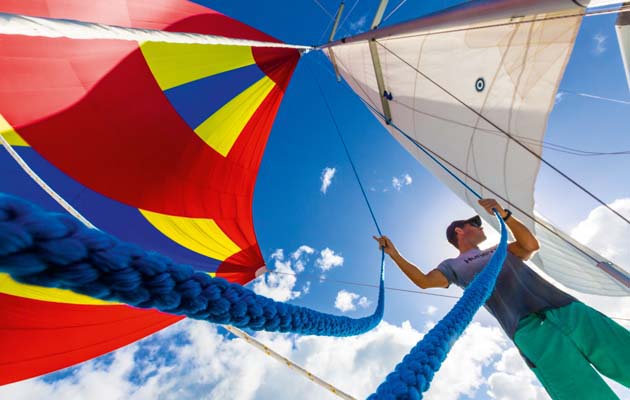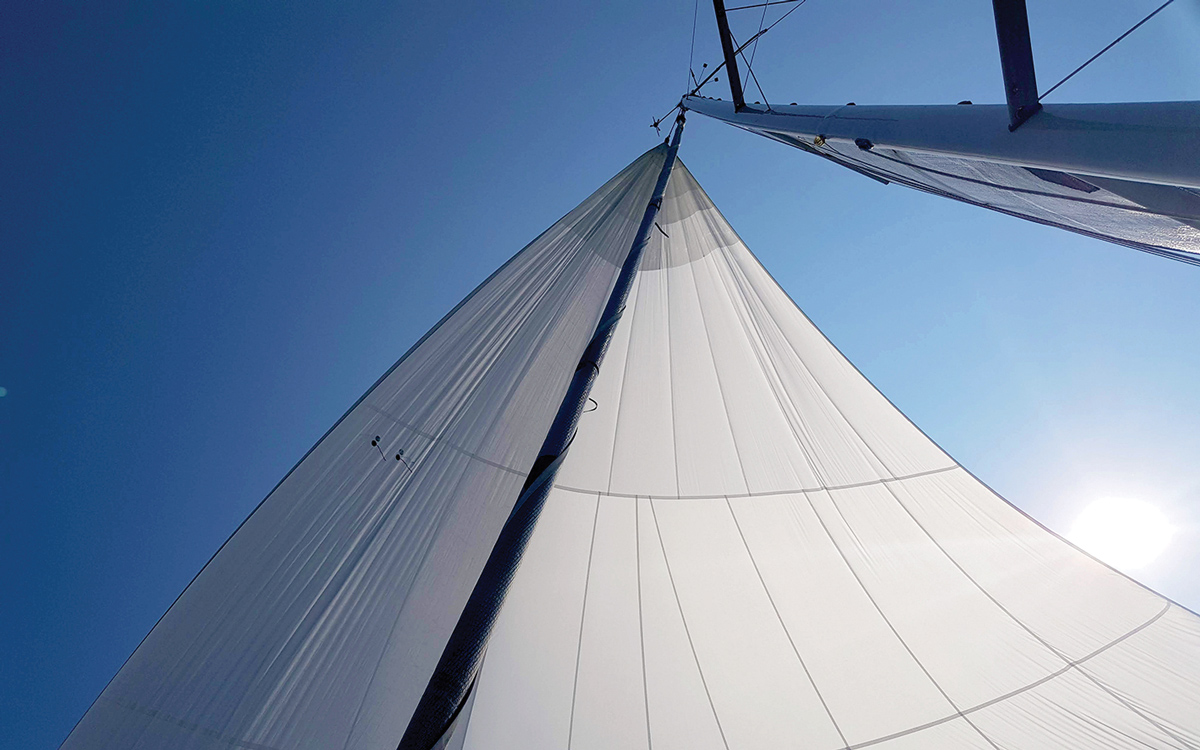Champion sailor and Volvo Ocean Race winner Carolijn Brouwer talks to Andy Rice about expert skills for fast sailing downwind
Carolijn Brouwer is a top talent, having been to the Olympic Games in three different classes (470, Europe and Tornado catamaran), and more recently raced extensively offshore, there are

Carolijn Brouwer is a top level professional sailor who knows a thing or two about downwind sailing
few people better placed to offer their advice on sailing downwind fast.
As a proven talent, Brouwer was an obvious pick for the all-female crew on Amer Sports Too for the 2001/02 edition of the Volvo Ocean Race. The Volvo 60 was a responsive planing boat that rewarded good instincts at the helm.
Brouwer found the Southern Ocean a challenging but fun learning ground for how to handle the wheel of a powerful 60-footer.
She went on to crew in two more round the world races with Team SCA and the winning Dongfeng Race Team. “I think I’d only ever been a couple of nights at sea when I went off to do my [first] Southern Ocean leg,” Brouwer recalls.
“I was trimming the main at the time. I remember when we dug the bow into a wave and the boat was basically underwater. When we popped back up again, I got washed to the back and ended up with my head through the spokes of the wheel. At that moment a big turn of the wheel really could have ended quite badly.
“There was so much water gushing over the deck, with so much force, I had to wait for it pass and hope that the helm didn’t change angle too much. Fortunately it ended up okay, I wasn’t hurt, and mostly I enjoyed the Southern Ocean and what it taught me about sailing downwind.”
Here are Brouwer’s five best tips for fast and safe sailing downwind:
Sailing downwind is all about feel
Dinghy sailors make good offshore helms because they bring that direct feel that you only learn from sitting in a little boat.
However, the transition from a dinghy to a big boat can be a big step that introduces a lot of new challenges, mostly the communication and team work required to work with a big crew.
Article continues below…
What downwind sails should you have for an Atlantic crossing?
What downwind sails should you buy for an Atlantic crossing or cruising beyond the Caribbean? This is one of the…
Downwind developments: The latest offwind sails for faster tradewind crossings
These can transform cruising yachts, giving them sufficient power to sail in light airs when previously crews would have been…
You can’t do everything yourself, the helm is just part of the system. You also have to get used to sailing to the numbers on the back of the mast. But even now I go with what I feel first, and use the instruments as a reference point for what I’m feeling.
The polars should give you a range to steer within, and then I like to let ‘feel’ determine the final details.
Use trimbooks
While ‘feel’ is important, so are trimbooks. These documents help you replicate the ideal setup from times when you know it’s worked in the past.
In the build up to an important race we test our sails, we test all the different set-ups, and so if we are sailing at a certain angle and we have a disagreement about how the A-sail is set, then instead of getting into a discussion about it we can fall back on our trimbook that will say, ‘under these conditions, and with this angle, this amount of breeze and these waves, this is what has proven to be fast when we were in training.’
Work with the trimmers
When sailing downwind, the trimmer will feel the changing pressure through the spinnaker sheet before you feel anything in the helm, so it’s important to have constant communication about how much pressure is going through that sheet.
Some helms like to receive ‘head up’ or ‘bear away’ instructions from the trimmer. Personally I’d rather just get information about the pressure and then decide what I want to do, especially when steering on waves, when you might want to stay down or up a little more because of what you feel and where the boat is on the wave.
Work the waves
When you’re going slightly slower than wave speed, you’re obviously trying to catch that wave; you’re looking for the wave to pick you up so you can keep going with it as long as you can before it rolls underneath you.
And then you set yourself up for the next one.

Photo: Elio Stichelbaut/Dongfeng Race Team
Steer up a little bit at a higher angle so you increase your speed to catch the wave. But of course whenever you’re sailing VMG downwind you’re also looking to gain depth, to come down as low as possible. So then you bring your bow down again when you’re on the wave, and the trick is that you don’t want to come down too far. Just before you feel like you’re about to cut the back of the wave, you need to steer back up again, to hopefully stay on it.
Don’t try to ride one wave as long as possible, use the speed from that wave as the launch pad to get you on to the next wave – you’re looking for a good average speed.
When you’re sailing boats that generally travel faster than wave speed, it’s more a case of looking for the path of least resistance through the wave in front of you. Still, the important goal is a high average speed rather than trying to win the competition for highest peak speed.
Throttle back
When sailing downwind is turning into a matter of survival, the first option is to start reducing your sail area. But once you’ve reduced it as much as you can, and you’ve got crew and equipment as far back in the boat as possible, there’s not much more you can do.
It’s inevitable that sometimes you’re going to lose control. Just bear in mind that if you have any choice in the matter the consequences of a Chinese gybe are usually way worse than a broach.
When the bow digs into the back of a wave, you don’t always have much control through the wheel at that point, but do everything in your power to luff the boat up to avoid a Chinese gybe.
A broach is the lesser of two evils.
 If you enjoyed this….
If you enjoyed this….
Yachting World is the world’s leading magazine for bluewater cruisers and offshore sailors. Every month we have inspirational adventures and practical features to help you realise your sailing dreams.Build your knowledge with a subscription delivered to your door. See our latest offers and save at least 30% off the cover price.







